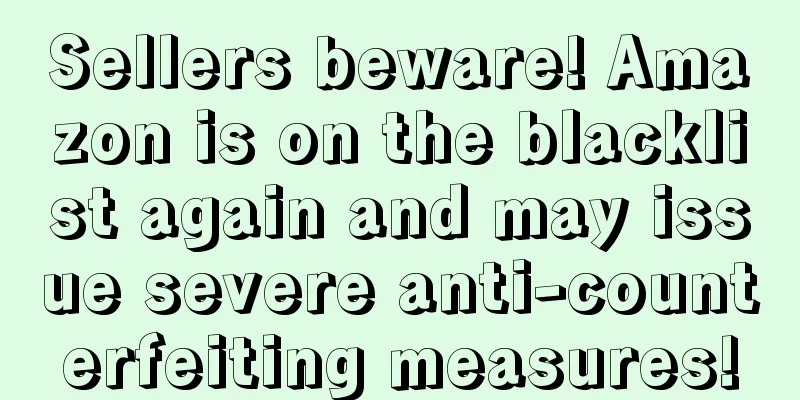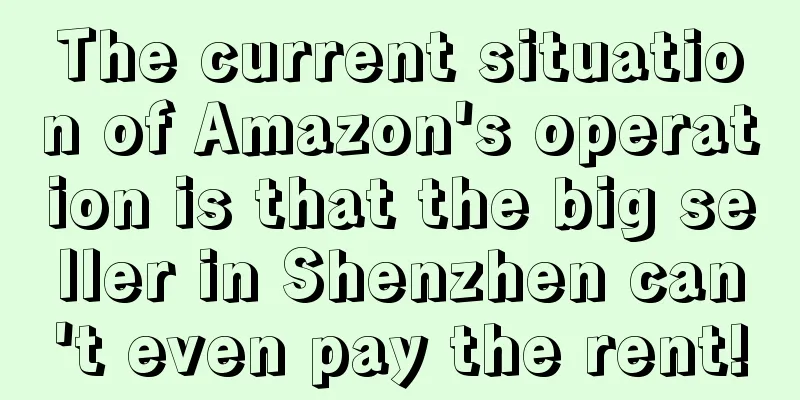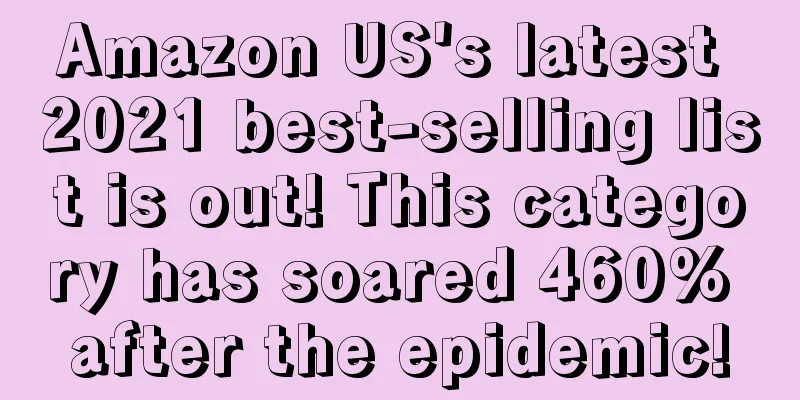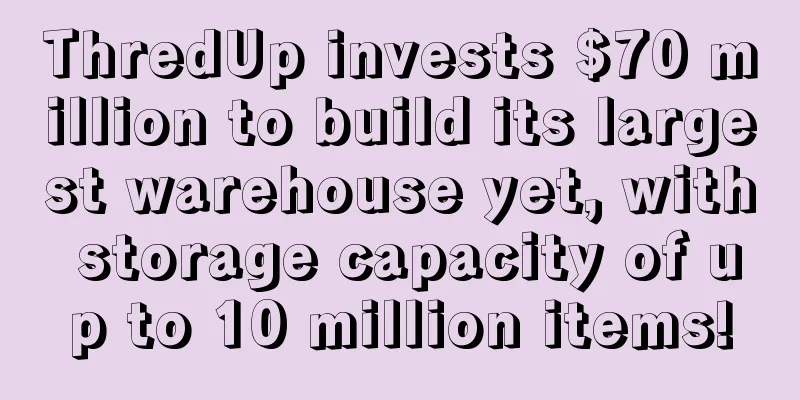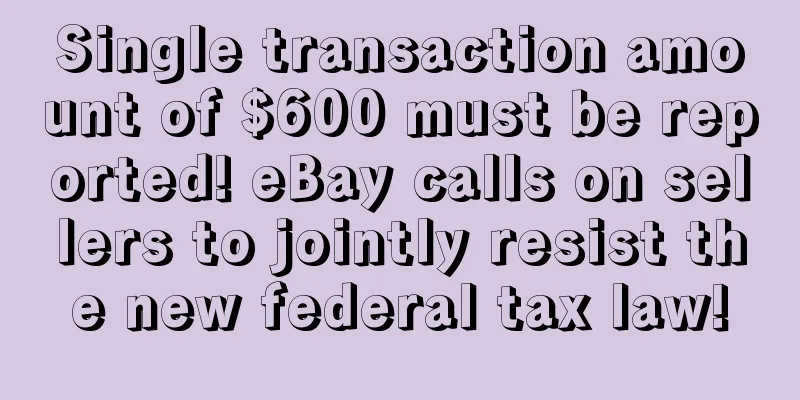|
Today is the presidential election in the United States, and it also happens to be China's Laba Festival. A seller joked: It's all a mess! Back to the point, sellers have been through a lot in the past year, plagued by various epidemics, out-of-stock, warehouse overflow, cabinet shortages, returns and other problems. However, in 2021, various problems have not been solved, and sellers' little hearts are almost unable to bear it. In addition to the seller, my brother-in-law doesn't seem to be having an easy time either. Amazon added to US 'notorious markets' list ▲ The picture comes from the Internet It is reported that Amazon's sites in the UK, Germany, Spain, France and Italy are included in the US government's annual "notorious markets" list. It is understood that this is not the first time that Amazon has been blacklisted by the United States. As early as 2019, Amazon's Canadian, German, French, Indian and British sites were included in the USTR's blacklist, and the USTR called it "a typical representative of the global counterfeiting and piracy problem." So why is Amazon frequently included in this notorious market list? A seller made the following analysis: 1. Amazon tolerated counterfeiting in the early days. In fact, since 2017, Amazon has been flooded with fake reviews, counterfeit products, and fake companies. After being complained by many buyers, Amazon claimed that it would protect the victimized buyers, but the victims could not find the identity of the sellers at all. Complainants on foreign websites alleged that Amazon did not thoroughly review third-party sellers on its market. 2. Counterfeit products are rampant. Well-known brands such as Apple, Omas, and Nike are flooded with fakes, and nearly 60,000 fake products were found between 2016 and 2017. According to foreign media reports, more than 90% of Apple data cables and chargers sold on Amazon are suspected to be fakes. Previously, when the U.S. Government Accountability Office (GAO) conducted an investigation on e-commerce websites, it found that half of the items purchased from e-commerce platforms including Amazon were fakes. 3. The supply of goods is chaotic and uncontrollable. In order to increase the variety and quantity of goods, Amazon has vigorously introduced third-party sellers, which has provided an opportunity for counterfeit goods. Due to the large number of categories and the chaotic supply of goods, it is impossible to effectively control third-party sellers, so a large number of counterfeit products have poured in. Obviously the crackdown is severe but the results are minimal? Due to the increasingly rampant counterfeit products, Trump signed an executive order in 2019, strictly prohibiting the circulation of counterfeit and shoddy products and contraband goods from entering the US market, and cracking down on counterfeit transactions on third-party online e-commerce platforms, and also making e-commerce platforms such as Amazon and Walmart as the main targets. It is reported that Amazon has also publicly stated that it will actively cooperate and formulate corresponding measures to crack down on third-party sellers who sell counterfeit products. ▲ The picture comes from the Internet Currently, Amazon has taken the following measures to crack down on counterfeit products: 1. Improve the transparency of the Amazon platform and display the merchant name and seller address on the platform. 2. Amazon launched the Zero Tolerance Program. Brands that join the Zero Program can delete counterfeit products, with the goal of completely eliminating counterfeit products. 3. Establish a global anti-counterfeiting team to crack down on counterfeiters on the Amazon platform and resort to legal action. 4. Brand registration has been upgraded to 2.0. This is to protect the rights of sellers, prevent others from copying their products, and safeguard their own brands. Obviously, the brother-in-law has taken a lot of actions to fight counterfeiting. According to data, Amazon invested more than $500 million in anti-counterfeiting actions in 2019 alone. However, Amazon was still blacklisted this year. As it stands, fighting against counterfeiting cannot be achieved overnight, but should be done step by step . Although the brother-in-law has stepped up its efforts to combat counterfeiting, counterfeit products are too stubborn and cannot be shaken off like a dog-skin plaster. Therefore, the brother-in-law may devote more energy to formulate more stringent anti-counterfeiting measures to get rid of the title of "the typical representative of global counterfeiting and piracy problems." When the anti-counterfeiting team was established, many sellers’ products were suspected to be counterfeit, which led to the deactivation of their accounts and the deletion of their products. ▲ Previously, a large number of sellers were banned for selling counterfeit goods. According to data from Amazon account freezing consultants Thompson & Holt, among the top ten most common reasons for Amazon seller accounts being frozen in 2020, [counterfeit products] accounted for 22% and ranked first.
Now that Amazon is on the "blacklist" again, I believe Amazon will invest more energy in the future and formulate stricter policies to stop counterfeit goods. Therefore, sellers need to abide by the rules of the Amazon platform and never sell counterfeit goods, which will cause the account to face the risk of suspension. Here, the editor summarizes the following suggestions for sellers’ reference: 1. Go for brand registration. Sellers who apply for brand registration can not only protect their own rights, but also find potential counterfeit goods and report them to Amazon in a timely manner. 2. Join Amazon Project Zero. Amazon's Project Zero is actually an anti-counterfeiting tool. Sellers who join the Project Zero can provide trademarks or logos, scan products on the platform, and eliminate counterfeit products by themselves. 3. Join the Amazon Transparency Program. Amazon provides specific transparent codes for products sold by sellers, which can be tracked in time when products enter and leave the warehouse to ensure authenticity. In short, sellers need to complete their product information as comprehensively as possible, be aware of the importance of brand, ensure the safety of products, and avoid any association with counterfeits and shoddy products. I wonder what other sellers think about Amazon's blacklist? What do you think about counterfeit products on the Amazon platform? You can discuss in the comments section~ Statement: The title and original text of this article shall not be modified when reprinting, and the source and original link shall be retained |
